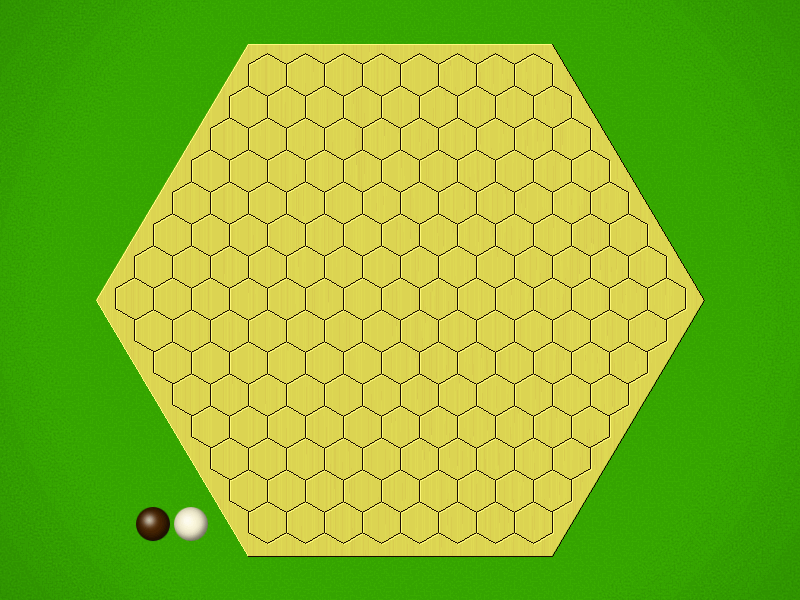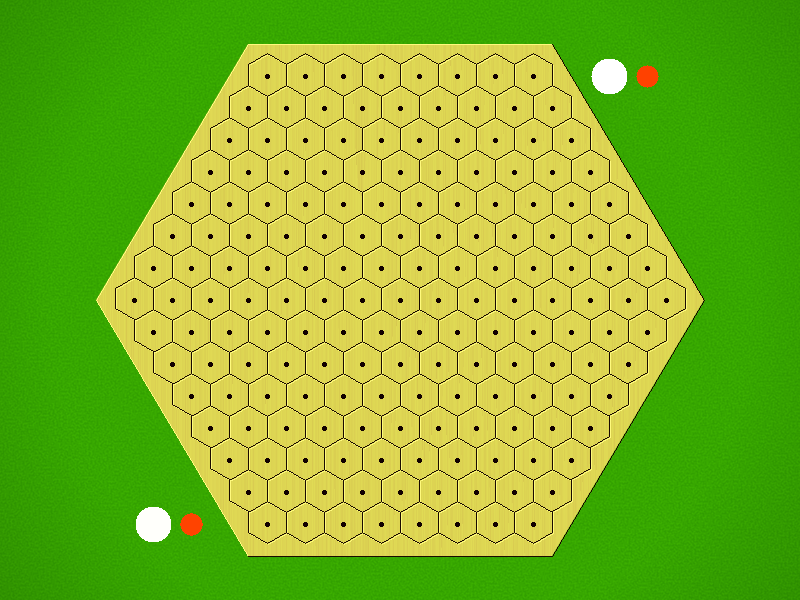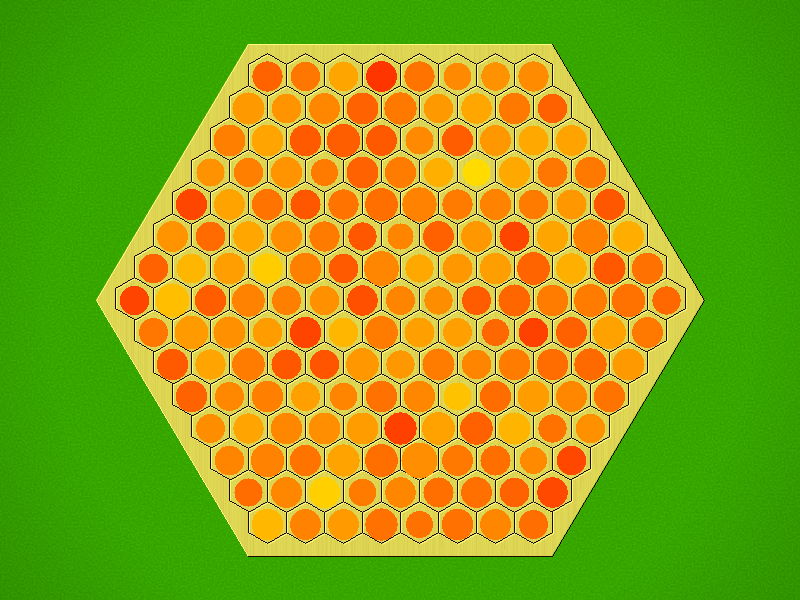| User | Rating | Comment |
|---|
| luigi87 | 9 | My game. |
| Zickzack | N/A | Elegant and innovative rules, would like to know more about gameplay |
| rayzg | 7.5 | It feels like a connection game where you get to place your opponent's goals! Ensuring that there's always an odd number of groups would be really, really, really annoying to play unless you're playing with a computer UI. It lost some ratings points because of that. |
| mrraow | 6 | Interesting constraint, but not very exciting to play. |
| Finlist | N/A | MYO PenP |
| CoreyClark | 10 | MY goodness this game is deep. This is possibly a bigger happy accident than Go. |
| milomilo122 | N/A | I've now played Yodd twice, and it's square-board analogue, Xodd, once. I much prefer Yodd. Impressions so far: First, the game's concept is more than a little intriguing. It's so coherent and simple and sensible that you can't believe no one's thought of it before, which to me is the hallmark of a beautiful idea - the inventor deserves high recognition for this. Staying connected across the center is important, since it allows you to keep your groups better connected. On the other hand, there's also incentive to build structures one or two rows away from the edges, because you can build "cages" for opponent stones there most easily. If it turns out that there's good balance between these two themes, Yodd could be a great game. As it is, my early impressions are positive. I discovered some interesting, unusual tactics immediately and some strategy considerations revealed themselves readily. There was no "I'm totally lost" feeling from which so many abstracts suffer. All to the good. If there's anything that annoyed me, it's that you need to keep track of how many groups, or even better, how many virtual groups both you and your opponent have, and it's hard to do, and I found myself recounting frequently. Maybe some kind of score track could remove this issue. On the other hand, only the difference in group number need be tracked really, so maybe this would become effortless with additional play. |
| King Lear | 10 | Yodd is amazing beautiful game. I am always up to a good game of Yodd at igGamesCenter! |
| orangeblood | 7 | Another enjoyable design from Luis Bola�os Mures. My appreciation for Yodd really shot up after playing against strong competition on a size 8 hex. There is very interesting board-wide strategy on larger boards. |
| Talisinbear | 7 | |
| simpledeep | 9 | |
| schwarzspecht | 7 | |
| hojoh | N/A | F |
| m-s-voss | 8 | Playing on self made board using "Go" pieces. A good abstract game. Similar to "Xodd". |
| grasa_total | 5 | The consequences of the "odd number of groups" rule seem to run deeper than I was able to see in one play. My total flop of an opening game (on IGGC) was described by one onlooker as "oh I've seen this strategy before" even though, like, actually I just had no idea what I was doing. |
| russ | 8 | This and the square-board version Xodd are both cool clever games. A practical problem occurs if there are many groups in play: sometimes we don't notice that the number of groups has accidentally/illegally become even. For that reason I recommend saying "3 4" or whatever after each turn, to consciously confirm the current number of groups each side has. |
| hiimjosh | 6 | I like this slightly more than Xodd because hexes, however the bigger boards take longer which is not a great tradeoff. See comments for Xodd as they are nearly identical to Yodd. Similarities to Catchup and Hex. It's okay Label: Good But Not Great |
| scih | 6.5 | |
| RichardIngram | 7 | |
| pezpimp | 7.5 | Based on one play: Similar mechanics to a linking game where you have to connect both sides, however in this one you must have the least amount of groups of pieces, thus you want to link them all together. You can pass at anytime and you can play your opponents pieces which is really infuriating but a great mechanic. There must also always be an odd amount of sets on the board, combined for both players, taking that into account you can't simply connect or add pieces since it would break that rule. Quite enjoyed it. |
| The Player of Games | 7 | |










